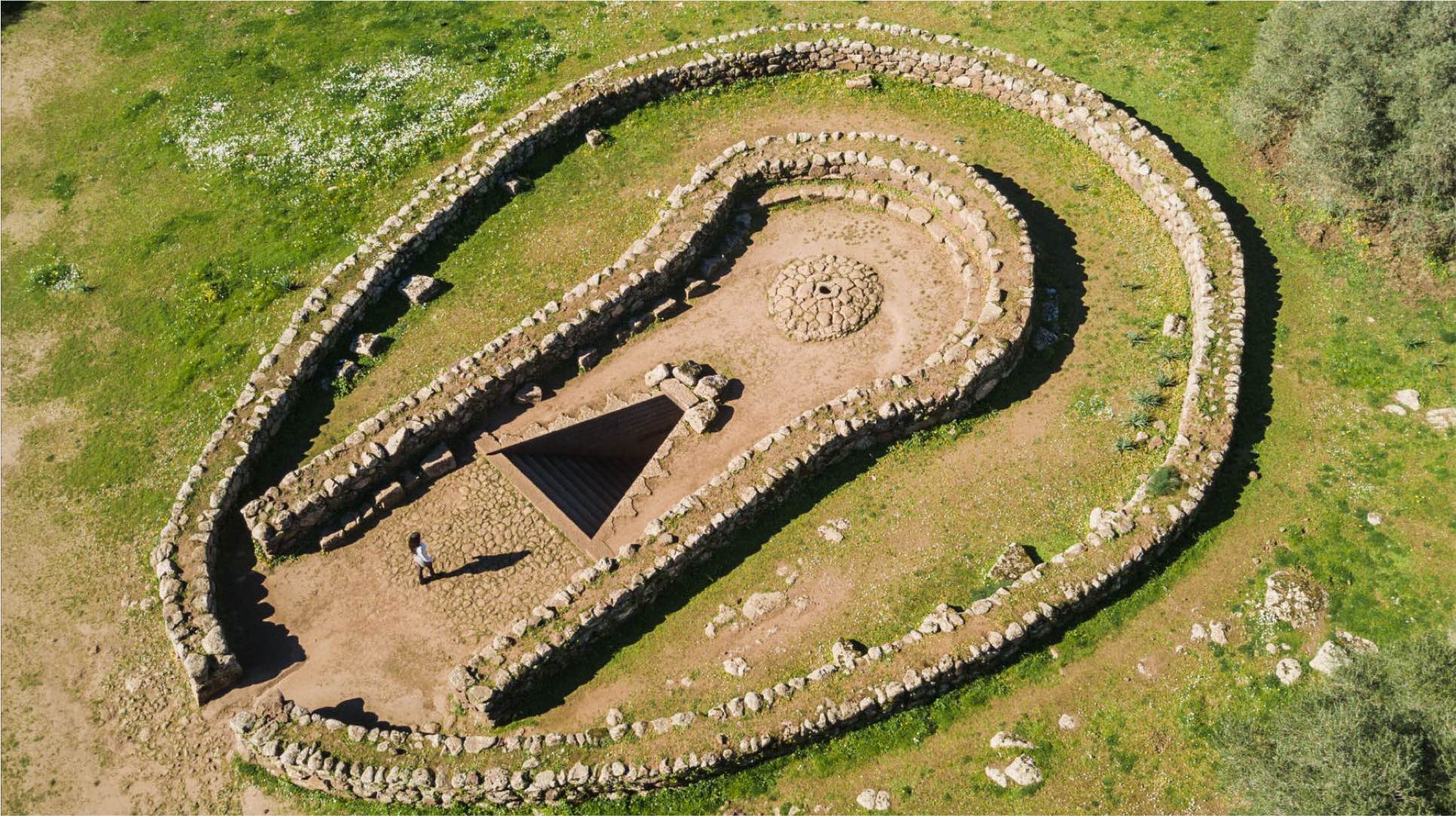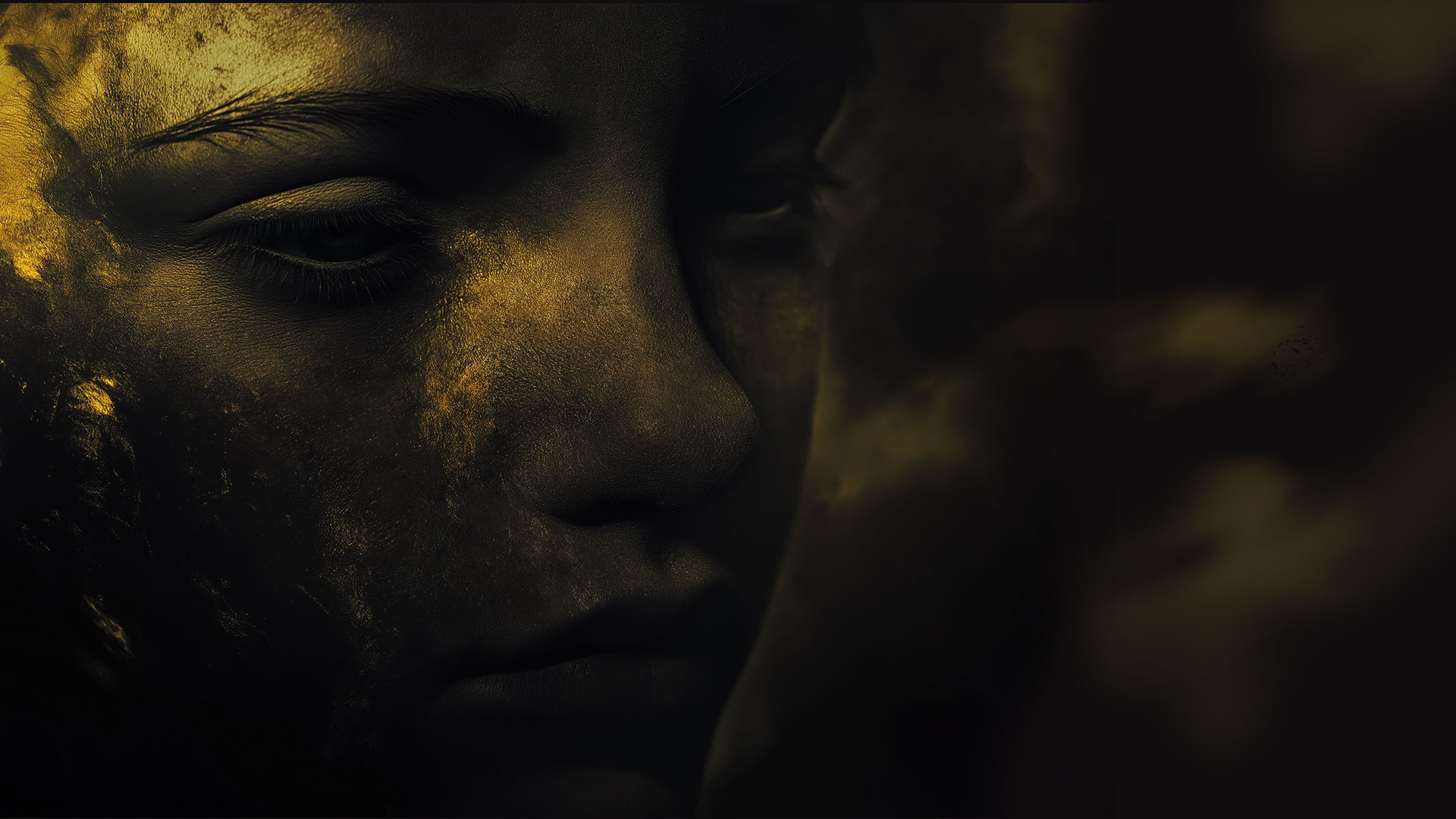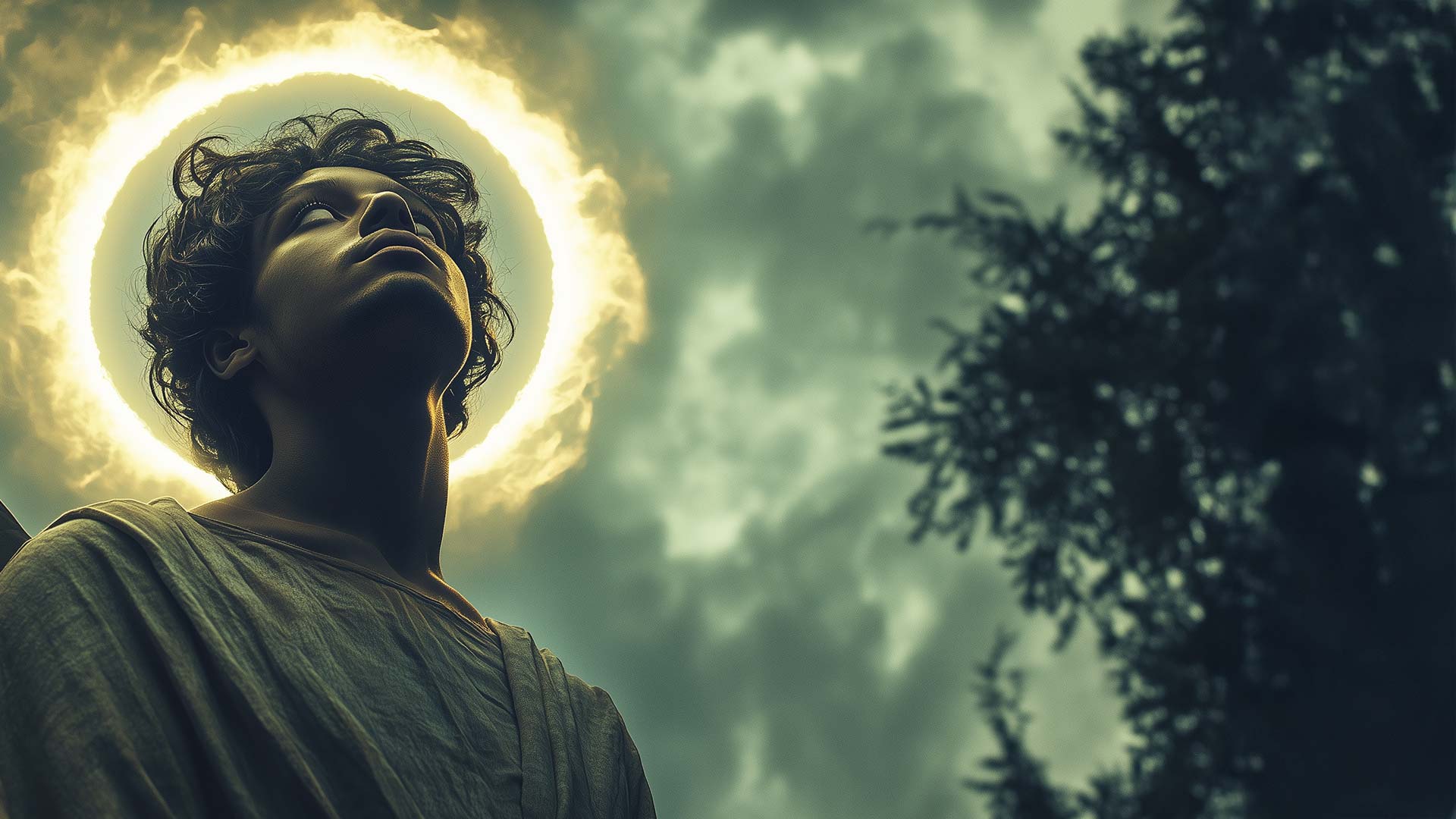Last summer, Mauro Biglino and Gian Matteo Corrias explored some of Sardinia’s most significant archaeological sites. Through four video-documentaries, their journey reveals ancient links between Nuragic culture and the eastern Mediterranean, revealing symbols, inscriptions and enigmatic monuments. This journey invites us to discover Sardinia as a crossroads of forgotten civilizations and knowledge.
CHAPTER 1
The talking stones – Laconi and the interpretation of the menhirs
In the first chapter of this fascinating journey through Sardinia, Mauro Biglino and Gian Matteo Corrias lead us to the heart of Laconi, one of the richest localities for prehistoric evidence. Here, the landscape is dominated by menhirs, ancient stone monoliths that are not only fascinating for their grandeur, but conceal meanings that go beyond mere megalithic architecture. Corrias explains how the cosmological symbolism represented by these stones reflects a worldview rooted in a connection between human microcosm and celestial macrocosm.
The principle of correspondence between man and the universe is translated in the arrangement of symbols carved in these menhirs, which are divided into three registers: the head, symbolizing the solar star; the body, representing earthly life; and the lower part, sunken into the earth, which recalls the chthonic, that is, subterranean, dimension. Among the most significant elements we find the representation of the “double trident,” a sign interpreted as an allusion to productive activities or symbols of power.
🇬🇧 subtitles
Corrias deepens the analysis of the stelae, comparing them with those found in Val Camonica and Lunigiana, and points out how the representation of the menhir head could symbolically correspond to the sun. These parallels help us understand that such monuments were not only ritual objects, but also cosmological representations that reflected a shared knowledge among different Eurasian cultures.
Corrias’ analysis goes further into the field of semiotics and symbolism, showing how the engravings found on the menhirs of Laconi are imbued with religious and cosmic meanings. Elements such as the trident or serpent, often associated with symbols of fertility and subterranean life, reinforce the idea that these monuments were a kind of bridge between the human and divine worlds.
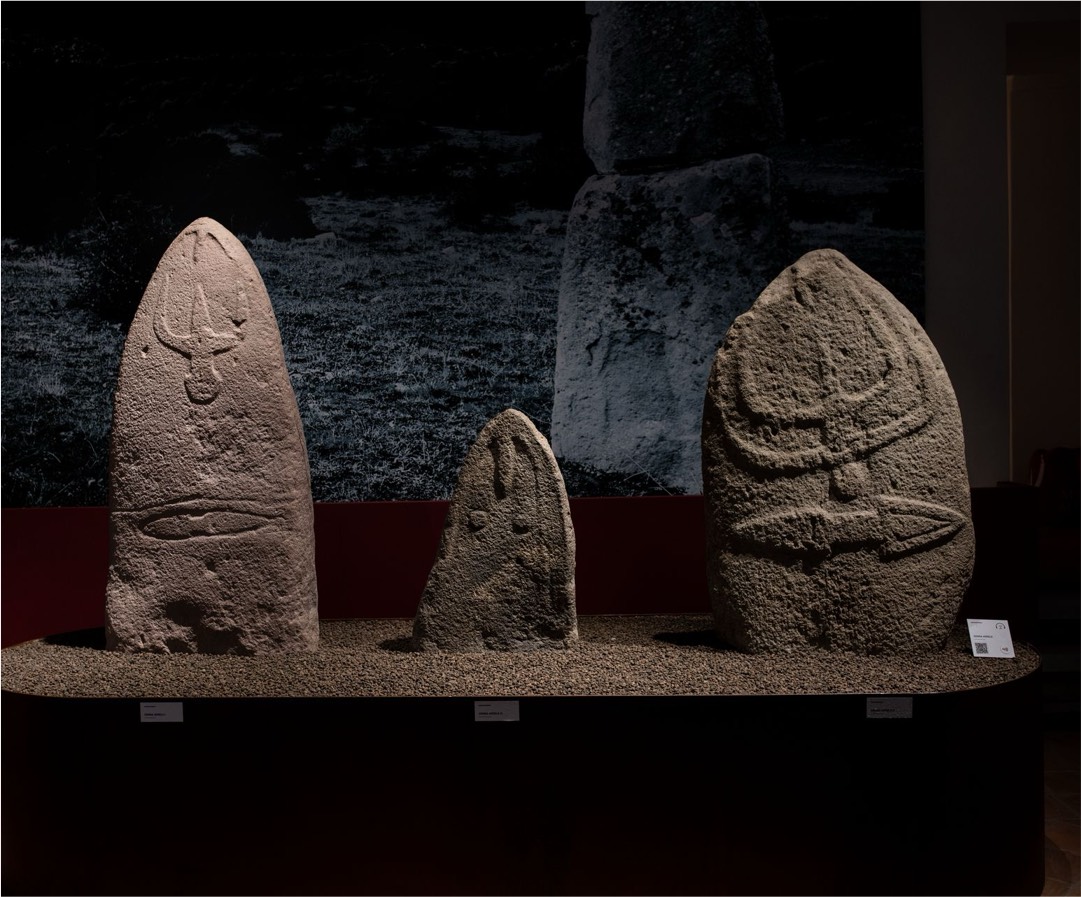
PARTE 2
The Perdu Pes inscription – A link to Semitic languages
In the second video, Biglino, Corrias and historian Luigi Sanna explore the site of Perdu Pes, where a mysterious stone inscription has ignited scholarly debate. This inscription, as it is explained to us, represents a direct link between the Nuragic language and Proto-Semitic, particularly Proto-Canaanite. Despite its significance, the site is sadly abandoned, a reflection of the scant attention given to such a crucial piece of Sardinian historical heritage.
Luigi Sanna guides us in interpreting the characters engraved on the stone, revealing symbols such as “bet” and “shin,” closely related to Proto-Canaanite writing. The inscription seems to tell stories of cultural interactions between Sardinia and the Middle East, with references to the god Shamash and the house of the sun, evoking an imagery of ancient solar cults. But what makes Sanna’s analysis even more surprising is the fact that the inscription has both Semitic and Indo-European elements, a unique combination that suggests a cultural context rich in exchanges and influences.
🇬🇧 subtitles
This inscription is just one of many pieces of evidence linking Sardinia to distant but equally ancient civilizations. The presence of shared languages and symbols among these cultures sheds a different light on Nuragic history, prompting a reconsideration of the island’s role as a crossroads of cultures and knowledge.
The meeting of languages is not just an academic curiosity, but a window into a world in which Sardinia may have been an integral part of a larger network of cultural and commercial exchange. However, the lack of protection and study of these artifacts is a loss to the understanding of our history.
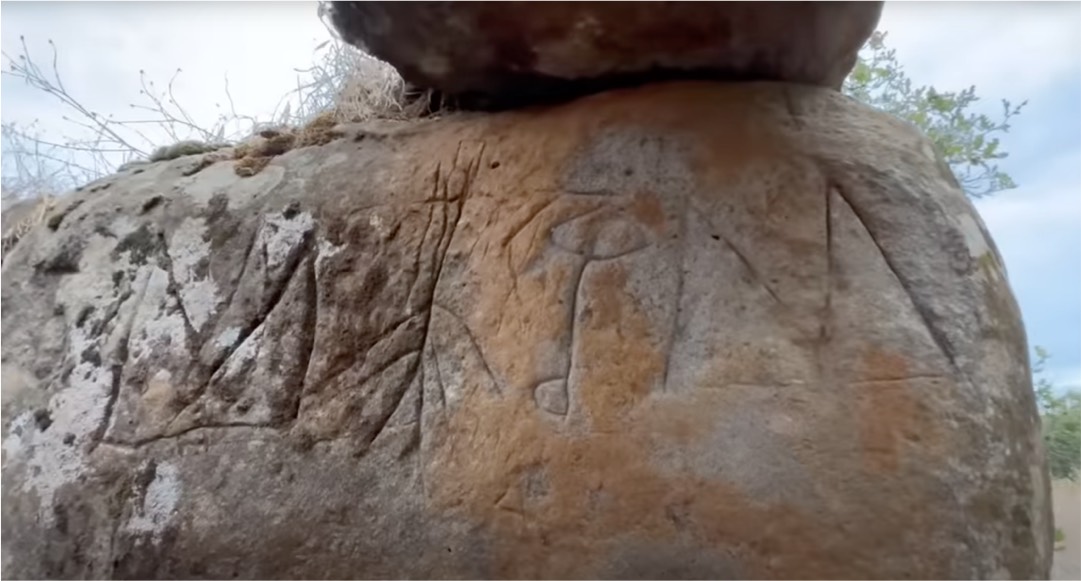
CHAPTER 3
The Sacred Well of Santa Cristina – A technological and astronomical enigma
The third video takes us to another of Sardinia’s most enigmatic sites: the Sacred Well of Santa Cristina. This monument, seemingly simple in its structure, hides a deep astronomical and symbolic meaning. Biglino, Corrias and Sanna guide us through a detailed reading of this well, highlighting the precision with which it was built, with a keen eye on solar and lunar cycles.
One of the most fascinating elements of the Sacred Well is the recurrence of the number 12, representing the months of the year and the houses of the zodiac. The staircase, consisting of 24 steps, and the taurine ashlars at the entrance reinforce the idea that this monument was dedicated to a solar cult. During particular times of the year, such as from April 16 to 21, a light manifestation takes place inside the well, created by the reflection of the sun’s rays on the water. This “astronomical machine,” as Sanna calls it, represents an outstanding example of the ancient Sardinians’ ability to build monuments perfectly aligned with celestial cycles.
🇬🇧 subtitles
The well of Santa Cristina is not just a religious monument, but a true work of engineering that combines practical functionality and sacred symbolism. The precision with which the interaction between sunlight and water was calculated, and the numerological recurrence, highlight the deep astronomical knowledge of the Nuragic peoples.
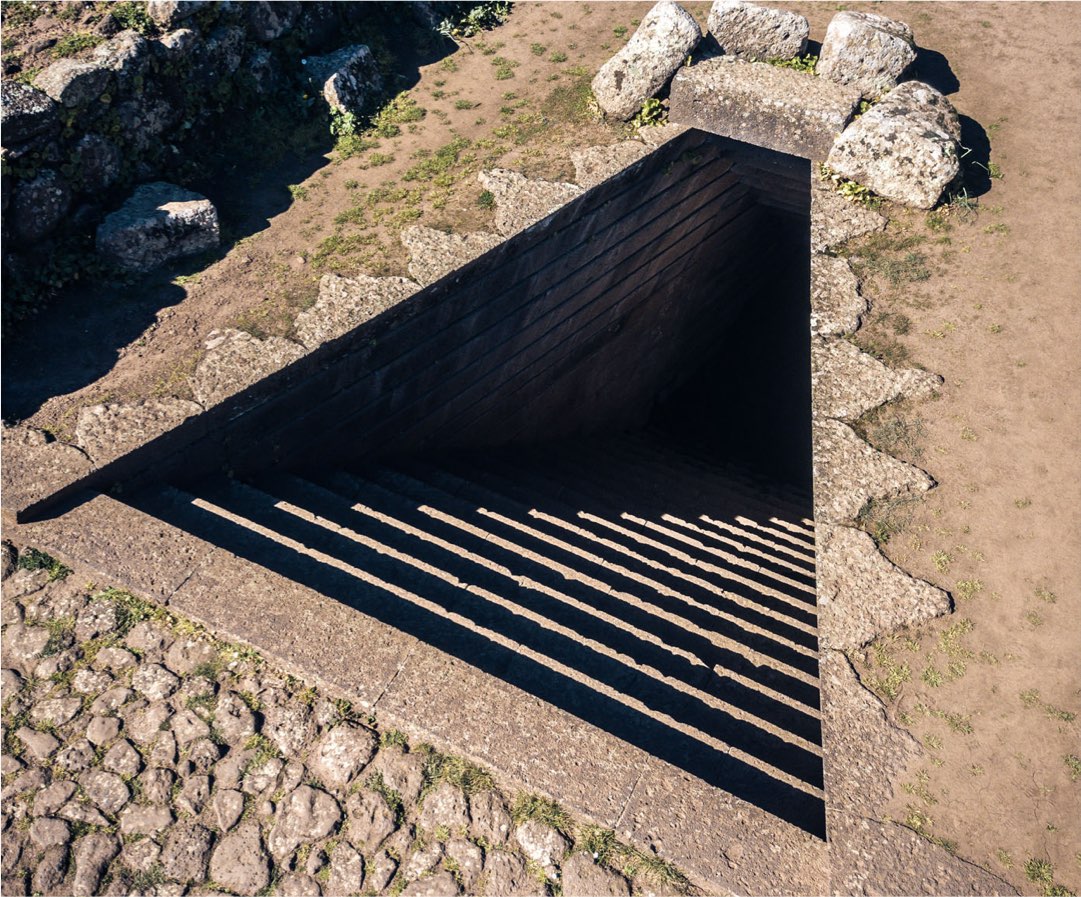
CHAPTER 4
Monte d’Accoddi – The Sardinian Ziggurat.
The last leg of this journey takes us to Monte d’Accoddi, one of the most extraordinary and unique monuments in the Mediterranean, defined by Gian Matteo Corrias as a Sardinian “ziggurat.” This stepped pyramidal structure, similar to Mesopotamian ziggurats, has a deeply cultic significance. Built on a base of 30 x 38 meters with a height of 9 meters, Monte d’Accoddi served as a place of sacrifice, an elevated altar to symbolically approach the gods.
The ziggurat of Monte d’Accoddi stands out for its monumentality and uniqueness in the European context, making it a true archaeological treasure. The large, 40-meter-long access ramp leads to the top of the monument, where religious rituals related to sun worship and Uranian deities supposedly took place. As explained in the video, the structure is flanked by a menhir and a dolmen altar, further reinforcing the sacredness of the site.
🇬🇧 subtitles
The connection between Monte d’Accoddi and Mesopotamian ziggurats once again highlights Sardinia’s role as a crossroads of cultures, at a time when ties with the Middle East were probably closer than previously thought. The ritual function of this monument, linked to the celebration of sacrifices, recalls biblical accounts of altars built for Yahweh on the heights, as described in the First Book of Kings.
The site, dating from the Ozieri culture of the Final Neolithic and later expanded in the Chalcolithic age, is a tangible example of the level of architectural and cultural development achieved by Sardinian peoples in prehistoric times. Despite its extraordinary importance, like many other places in Sardinia, Monte d’Accoddi is still little known and studied.
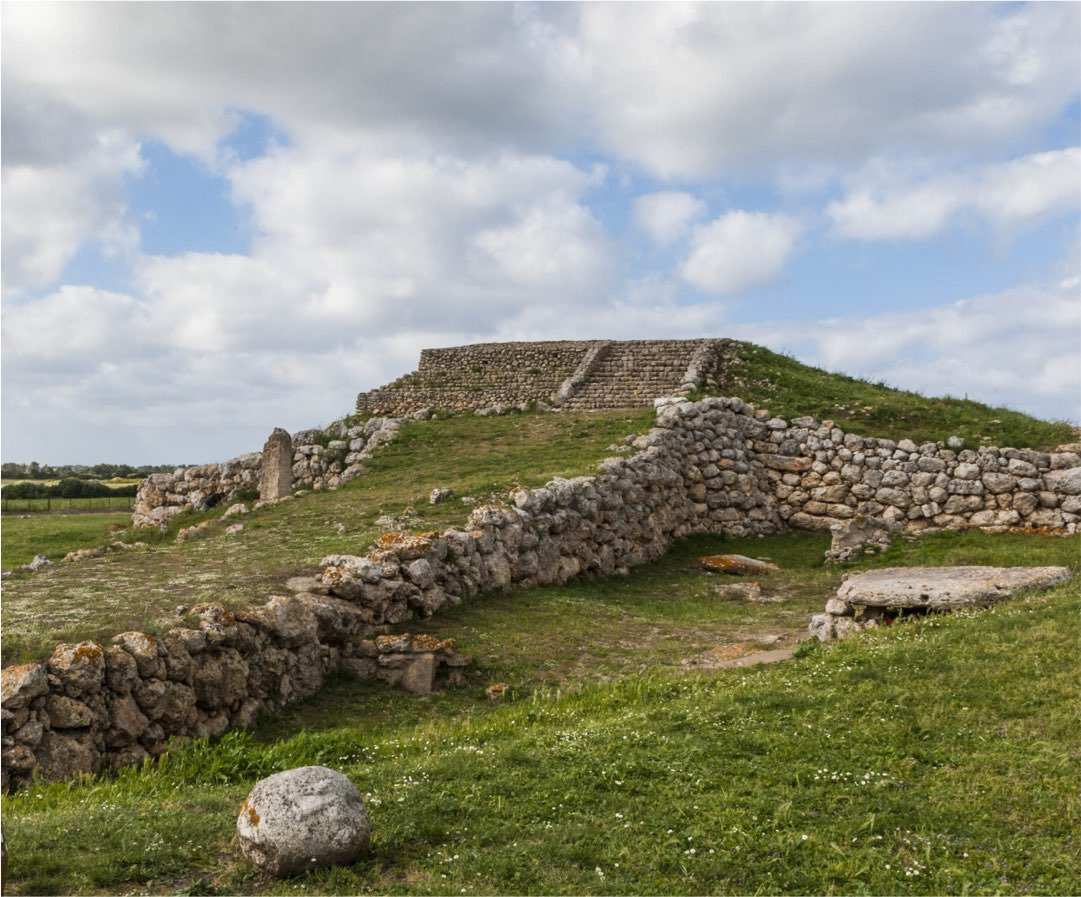
Conclusion
Mauro Biglino and Gian Matteo Corrias’ journey through Sardinia offers us a unique look at an ancient land, rich in history and mystery. From the menhirs of Laconi, which speak of cosmology and ancient rituals, to the inscription of Perdu Pes, which links Sardinia to Semitic cultures, to the Sacred Well of Santa Cristina, with its surprising astronomical connections, and finally to the extraordinary ziggurat of Monte d’Accoddi, this journey shows us a different Sardinia, yet to be discovered.
The history of Sardinia, often limited to nuraghi and Phoenician and Roman rule, turns out to be much more complex and fascinating. Through archaeological, epigraphic and monumental evidence, a picture emerges of a civilization that dialogued with the eastern Mediterranean and developed astronomical, architectural and religious knowledge of the highest order.
The rediscovery of these places and their stories invites us to rethink the island’s past, and perhaps, to reevaluate its role in the context of ancient civilizations. Sardinia is not only a land of nuraghi, but a crossroads of cultures, religions and knowledge that deserve to be deepened and enhanced.


